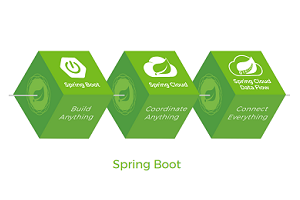源码分析 Mybatis 的 foreach 为什么会出现性能问题
背景
最近在做一个类似于综合报表之类的东西,需要查询所有的记录(数据库记录有限制),大概有1W条记录,该报表需要三个表的数据,也就是根据这 1W 个 ID 去执行查询三次数据库,其中,有一条查询 SQL 是自己写,其他两条是根据别人提供的接口进行查询,刚开始的时候,没有多想,直接使用 in 进行查询,使用 Mybatis 的 foreach 语句;项目中使用的是 jsonrpc 来请求数据,在测试的时候,发现老是请求不到数据,日志抛出的是 jsonrpc 超时异常,继续查看日志发现,是被阻塞在上面的三条SQL查询中。
在以前分析 Mybatis 的源码的时候,了解到,Mybatis 的 foreach 会有性能问题,所以改了下 SQL,直接在代码中拼接SQL,然后在 Mybatis 中直接使用 # 来获取,替换 class 测试了下,果然一下子就能查询出数据。
前提
这里先不考虑使用 in 好不好,如何去优化 in,如何使用 exists 或 inner join 进行代替等,这里就只是考虑使用了 in 语句,且使用了 Mybatis 的 foreach 语句进行优化,其实 foreach 的优化很简单,就是把 in 后面的语句在代码里面拼接好,在配置文件中直接通过 #{xxx} 或 ${xxx} 当作字符串直接使用即可。
测试
在分析 foreach 源码之前,先构造个数据来看看它们的区别有多大。
建表语句:
CREATE TABLE person
(
id int(11) PRIMARY KEY NOT NULL,
name varchar(50),
age int(11),
job varchar(50)
);插入 1W 条数据:
POJO 类:
@Getter
@Setter
@ToString
@NoArgsConstructor
@AllArgsConstructor
public class Person implements Serializable {
private int id;
private String name;
private String job;
private int age;
}方式一
通过原始的方式,使用 foreach 语句:
1. 在 dao 里面定义方法:
List<Person> queryPersonByIds(@Param("ids") List<Integer> ids);
2. 配置文件SQL:
<select id="queryPersonByIds" parameterType="list" resultMap="queryPersonMap">
select * from person where 1=1
<if test="ids != null and ids.size() > 0">
and id in
<foreach collection="ids" item="item" index="index" separator="," open="(" close=")">
#{item}
</foreach>
</if>
</select>3. 执行 main 方法:
@RunWith(SpringJUnit4ClassRunner.class)
@ContextConfiguration(locations = { "classpath:spring-mybatis.xml" })
public class MainTest {
@Autowired
private IPersonService personService;
@Test
public void test(){
// 构造 1W 个 ID
List<Integer> ids = new ArrayList<>();
for (int i = 1; i <= 10000; i++) {
ids.add(i);
}
long start = System.currentTimeMillis();
// 执行三次
personService.queryPersonByIds(ids);
personService.queryPersonByIds(ids);
personService.queryPersonByIds(ids);
long end = System.currentTimeMillis();
System.out.println(String.format("耗时:%d", end - start));
}
}
结果:耗时:2853可以看到通过 foreach 的方法,大概需要 3s
方式二
在代码中封装 SQL ,在配置文件中 通过 ${xxx} 来获取:
1. 在 dao 添加方法:
List<Person> queryPersonByIds2(@Param("ids") String ids);
2. 配置文件SQL:
<select id="queryPersonByIds2" parameterType="String" resultMap="queryPersonMap">
select * from person where 1=1
<if test="ids != null and ids != ''">
and id in ${ids}
</if>
</select>3. 执行 main 方法:
@Test
public void test_3(){
// 拼接 SQL
StringBuffer sb = new StringBuffer();
sb.append("(");
for (int i = 1; i < 10000; i++) {
sb.append(i).append(",");
}
sb.deleteCharAt(sb.toString().length() - 1);
sb.append(")");
// 最终的 SQL 为 (1,2,3,4,5...)
long start2 = System.currentTimeMillis();
// 执行三次
personService.queryPersonByIds2(sb.toString());
personService.queryPersonByIds2(sb.toString());
personService.queryPersonByIds2(sb.toString());
long end2 = System.currentTimeMillis();
System.out.println(String.format("耗时:%d", end2 - start2));
}
结果:耗时:360通过拼接 SQL,使用 ${xxx} 的方式,执行同样的 SQL ,耗时大概 360 ms
方式三
在代码中封装 SQL ,在配置文件中 通过 #{xxx} 来获取:
1. 在 dao 中添加方法:
List<Person> queryPersonByIds3(@Param("ids") String ids);
2. 配置文件SQL:
<select id="queryPersonByIds3" parameterType="String" resultMap="queryPersonMap">
select * from person where 1=1
<if test="ids != null and ids != ''">
and id in (#{ids})
</if>
</select>3. 执行 main 方法:
@Test
public void test_3(){
// 拼接 SQL
StringBuffer sb2 = new StringBuffer();
for (int i = 1; i < 10000; i++) {
sb2.append(i).append(",");
}
sb2.deleteCharAt(sb2.toString().length() - 1);
// 最终的SQL为 1,2,3,4,5....
long start3 = System.currentTimeMillis();
personService.queryPersonByIds3(sb2.toString());
personService.queryPersonByIds3(sb2.toString());
personService.queryPersonByIds3(sb2.toString());
long end3 = System.currentTimeMillis();
System.out.println(String.format("耗时:%d", end3 - start3));
}
结果:耗时:30通过拼接 SQL,使用 #{xxx} 的方式,执行同样的 SQL ,耗时大概 30 ms
总结
通过上面三种方式可以看到,使用不同的方式,耗时的差别还是麻大的,最快的是 拼接 SQL,使用 #{xxx} 当作字符串处理,最慢的是 foreach。为什么 foreach 会慢那么多呢,后面再分析源码的时候再进行分析;而这里同样是拼接 SQL 的方式,#{xxx} 和 ${xxx} 耗时却相差 10 倍左右;我们知道,Mybatis 在解析 # 和 $ 这两种不同的符号时,采用不同的处理策略;使用过 JDBC 的都知道,通过 JDBC 执行 SQL 有两种方式: Statment 对象和PreparedStatment 对象, PreparedStatment 表示预编译的SQL,包含的SQL已经预编译过了,SQL 中的参数部分使用 ?进行占位,之后使用 setXXX 进行赋值,当使用 Statement 对象时,每次执行一个SQL命令时,都会对它进行解析和编译。所有 PreparedStatment 效率要高一些。那么 Mybatis 在解析 # 和 $ 的时候,分别对应的是这两种对象,# 被解析成 PreparedStatment 对象,通过 ? 进行占位,之后再赋值,而 $ 被解析成 Statement ,通过直接拼接SQL的方式赋值,所以,为什么同样是通过在代码中拼接 SQL ,# 和 $ 的耗时不同的原因。
PS:上面只是介绍了三种方式,应该没有人问,拼接SQL为 (1,2,3,4,5),在配置SQL中通过 #{xxx} 来获取吧
foreach 源码解析
下面来看下 foreach 是如何被解析的,最终解析的 SQL 是什么样的:
在 Mybatis 中,foreach 属于动态标签的一种,也是最智能的其中一种,Mybatis 每个动态标签都有对应的类来进行解析,而 foreach 主要是由 ForEachSqlNode 负责解析。
ForeachSqlNode 主要是用来解析 <foreach> 节点的,先来看看 <foreach> 节点的用法:
<select id="queryPersonByIds" parameterType="list" resultMap="queryPersonMap">
select * from person where 1=1
<if test="ids != null and ids.size() > 0">
and id in
<foreach collection="ids" item="item" index="index" separator="," open="(" close=")">
#{item}
</foreach>
</if>
</select>最终被 数据库执行的 SQL 为 select * from person where 1=1 and id in (1,2,3,4,5)
先来看看它的两个内部类:
PrefixedContext
该类主要是用来处理前缀,比如 "(" 等。
private class PrefixedContext extends DynamicContext {
private DynamicContext delegate;
// 指定的前缀
private String prefix;
// 是否处理过前缀
private boolean prefixApplied;
// .......
@Override
public void appendSql(String sql) {
// 如果还没有处理前缀,则添加前缀
if (!prefixApplied && sql != null && sql.trim().length() > 0) {
delegate.appendSql(prefix);
prefixApplied = true;
}
// 拼接SQL
delegate.appendSql(sql);
}
}FilteredDynamicContext
FilteredDynamicContext 是用来处理 #{} 占位符的,但是并未绑定参数,只是把 #{item} 转换为 #{_frch_item_1} 之类的占位符。
private static class FilteredDynamicContext extends DynamicContext {
private DynamicContext delegate;
//对应集合项在集合的索引位置
private int index;
// item的索引
private String itemIndex;
// item的值
private String item;
//.............
// 解析 #{item}
@Override
public void appendSql(String sql) {
GenericTokenParser parser = new GenericTokenParser("#{", "}", new TokenHandler() {
@Override
public String handleToken(String content) {
// 把 #{itm} 转换为 #{__frch_item_1} 之类的
String newContent = content.replaceFirst("^\\s*" + item + "(?![^.,:\\s])", itemizeItem(item, index));
// 把 #{itmIndex} 转换为 #{__frch_itemIndex_1} 之类的
if (itemIndex != null && newContent.equals(content)) {
newContent = content.replaceFirst("^\\s*" + itemIndex + "(?![^.,:\\s])", itemizeItem(itemIndex, index));
}
// 再返回 #{__frch_item_1} 或 #{__frch_itemIndex_1}
return new StringBuilder("#{").append(newContent).append("}").toString();
}
});
// 拼接SQL
delegate.appendSql(parser.parse(sql));
}
private static String itemizeItem(String item, int i) {
return new StringBuilder("__frch_").append(item).append("_").append(i).toString();
}
}ForeachSqlNode
了解了 ForeachSqlNode 它的两个内部类之后,再来看看它的实现:
public class ForEachSqlNode implements SqlNode {
public static final String ITEM_PREFIX = "__frch_";
// 判断循环的终止条件
private ExpressionEvaluator evaluator;
// 循环的集合
private String collectionExpression;
// 子节点
private SqlNode contents;
// 开始字符
private String open;
// 结束字符
private String close;
// 分隔符
private String separator;
// 本次循环的元素,如果集合为 map,则index 为key,item为value
private String item;
// 本次循环的次数
private String index;
private Configuration configuration;
// ...............
@Override
public boolean apply(DynamicContext context) {
// 获取参数
Map<String, Object> bindings = context.getBindings();
final Iterable<?> iterable = evaluator.evaluateIterable(collectionExpression, bindings);
if (!iterable.iterator().hasNext()) {
return true;
}
boolean first = true;
// 添加开始字符串
applyOpen(context);
int i = 0;
for (Object o : iterable) {
DynamicContext oldContext = context;
if (first) {
// 如果是集合的第一项,则前缀prefix为空字符串
context = new PrefixedContext(context, "");
} else if (separator != null) {
// 如果分隔符不为空,则指定分隔符
context = new PrefixedContext(context, separator);
} else {
// 不指定分隔符,在默认为空
context = new PrefixedContext(context, "");
}
int uniqueNumber = context.getUniqueNumber();
if (o instanceof Map.Entry) {
// 如果集合是map类型,则将集合中的key和value添加到bindings参数集合中保存
Map.Entry<Object, Object> mapEntry = (Map.Entry<Object, Object>) o;
// 所以循环的集合为map类型,则index为key,item为value,就是在这里设置的
applyIndex(context, mapEntry.getKey(), uniqueNumber);
applyItem(context, mapEntry.getValue(), uniqueNumber);
} else {
// 不是map类型,则将集合中元素的索引和元素添加到 bindings集合中
applyIndex(context, i, uniqueNumber);
applyItem(context, o, uniqueNumber);
}
// 调用 FilteredDynamicContext 的apply方法进行处理
contents.apply(new FilteredDynamicContext(configuration, context, index, item, uniqueNumber));
if (first) {
first = !((PrefixedContext) context).isPrefixApplied();
}
context = oldContext;
i++;
}
// 添加结束字符串
applyClose(context);
return true;
}
private void applyIndex(DynamicContext context, Object o, int i) {
if (index != null) {
context.bind(index, o); // key为idnex,value为集合元素
context.bind(itemizeItem(index, i), o); // 为index添加前缀和后缀形成新的key
}
}
private void applyItem(DynamicContext context, Object o, int i) {
if (item != null) {
context.bind(item, o);
context.bind(itemizeItem(item, i), o);
}
}
}所以该例子:
<select id="queryPersonByIds" parameterType="list" resultMap="queryPersonMap">
select * from person where 1=1
<if test="ids != null and ids.size() > 0">
and id in
<foreach collection="ids" item="item" index="index" separator="," open="(" close=")">
#{item}
</foreach>
</if>
</select>解析之后的 SQL 为:
select * from person where 1=1 and id in (#{__frch_item_0}, #{__frch_item_1}, #{__frch_item_2}, #{__frch_item_3}, #{__frch_item_4})
之后在通过 PreparedStatment 的 setXXX 来进行赋值。
所以,到这里,知道了 Mybatis 在解析 foreach 的时候,最后还是解析成了 # 的方式,但是为什么还是很慢呢,这是因为需要循环解析 #{__frch_item_0} 之类的占位符,foreach 的集合越大,解析越慢。既然知道了需要解析占位符,为何不自己拼接呢,所以就可以在代码中拼接好,而不再使用 foreach 啦。
所以,Mybatis 在解析 foreach 的时候,底层还是会解析成 # 号的形式而不是 $ 的形式,既然知道了这个,如果 需要 foreach 的集合很大,就可以使用代码拼接 SQL ,使用 (#{xxx}) 的方式进行获取,不要再拼接成 (1,2,3,4,5) 再使用 ${xxx} 的方式啦。
关于其他 Mybatis 动态 SQL 的解析可以参考:
Mybatis Mapper.xml 配置文件中 resultMap 节点的源码解析
Mybatis Mapper 接口源码解析(binding包)
 关注公众号
关注公众号
低调大师中文资讯倾力打造互联网数据资讯、行业资源、电子商务、移动互联网、网络营销平台。
持续更新报道IT业界、互联网、市场资讯、驱动更新,是最及时权威的产业资讯及硬件资讯报道平台。
转载内容版权归作者及来源网站所有,本站原创内容转载请注明来源。
-
上一篇

Dubbo标签解析详解
在Spring继承dubbo时,会使用dubbo自定义的标签来定义相关的属性,常见的标签有<dubbo:application/>,<dubbo:registry/>,<dubbo:service/>等。对于这些标签的解析,dubbo都是使用的统一的方式,而最终注册到Spring容器中的是一个个的以Config结尾的bean,比如:ApplicationConfig,RegistryConfig,ServiceBean等。本文主要讲解dubbo是如何按照统一的方式解析这些自定义标签的。 关于Spring对自定义标签的解析流程,读者可以阅读本人前面写的Spring自定义标签解析与实现。这里首先我们在spring定义bean的xml文件中,可以看到,dubbo对应的xmlns所指定的URL为 xmlns:dubbo="http://dubbo.apache.org/schema/dubbo" 这里我们全局搜索dubbo.apache.org/schema/dubbo,可以找到对应的spring.handlers文件如下: http\://dubbo.ap...
-
下一篇

一次生产 CPU 100% 排查优化实践
前言 到了年底果然都不太平,最近又收到了运维报警:表示有些服务器负载非常高,让我们定位问题。 还真是想什么来什么,前些天还故意把某些服务器的负载提高(没错,老板让我写个 BUG!),不过还好是不同的环境互相没有影响。 定位问题 拿到问题后首先去服务器上看了看,发现运行的只有我们的 Java 应用。于是先用 ps 命令拿到了应用的 PID。 接着使用 top -Hp pid 将这个进程的线程显示出来。输入大写的 P 可以将线程按照 CPU 使用比例排序,于是得到以下结果。 果然某些线程的 CPU 使用率非常高。 为了方便定位问题我立马使用 jstack pid > pid.log 将线程栈 dump 到日志文件中。 我在上面 100% 的线程中随机选了一个 pid=194283 转换为 16 进制(2f6eb)后在线程快照中查询: 因为线程快照中线程 ID 都是16进制存放。 发现这是 Disruptor 的一个堆栈,前段时间正好解决过一个由于 Disruptor 队列引起的一次 OOM:强如 Disruptor 也发生内存溢出? 没想到又来一出。 为了更加直观的查看线程的状态信息...
相关文章
文章评论
共有0条评论来说两句吧...










 微信收款码
微信收款码 支付宝收款码
支付宝收款码